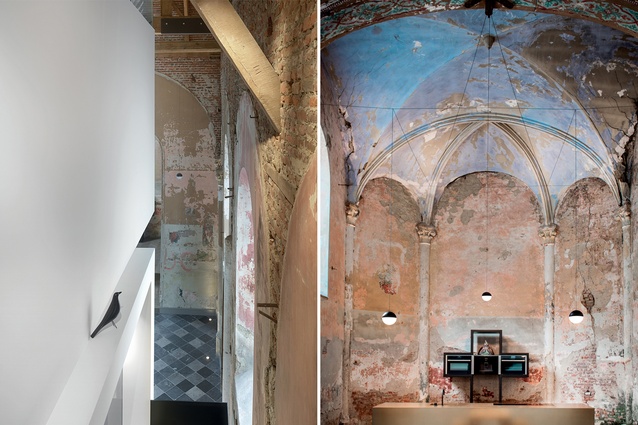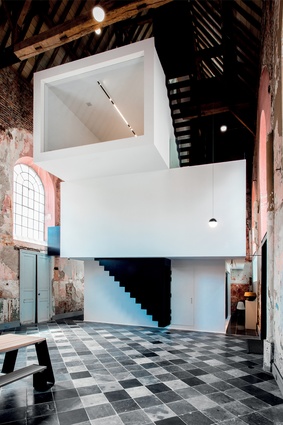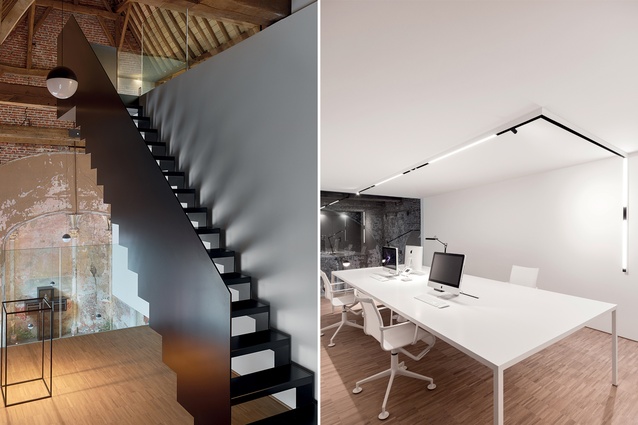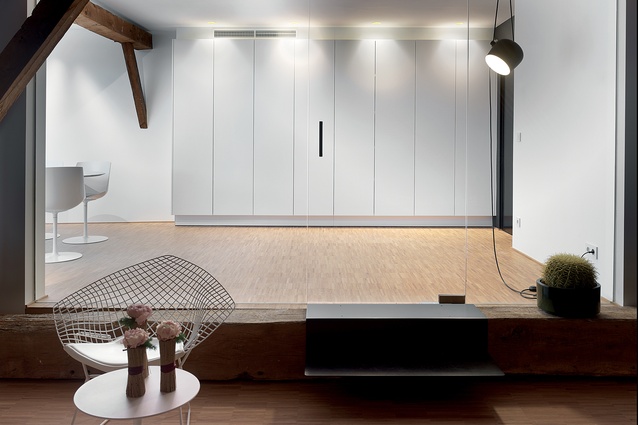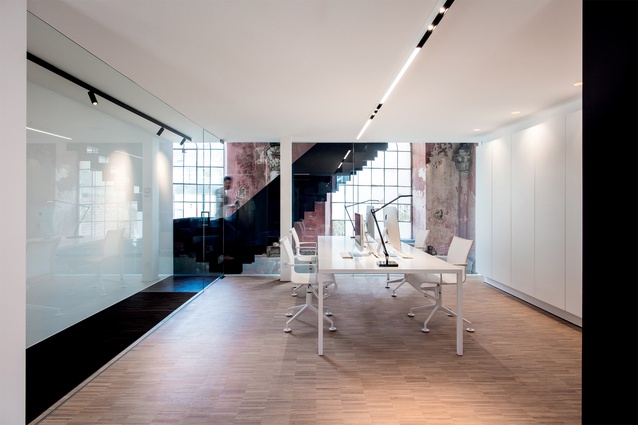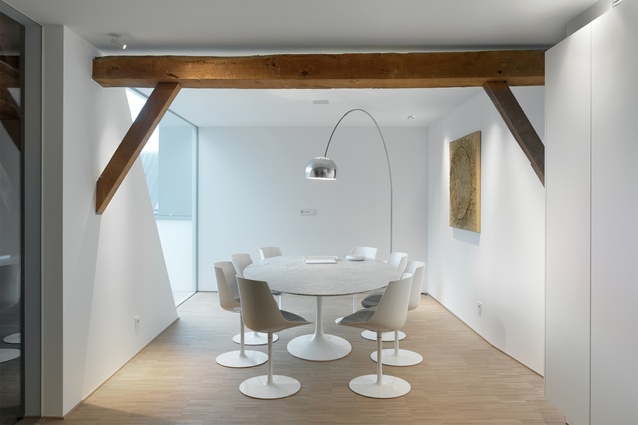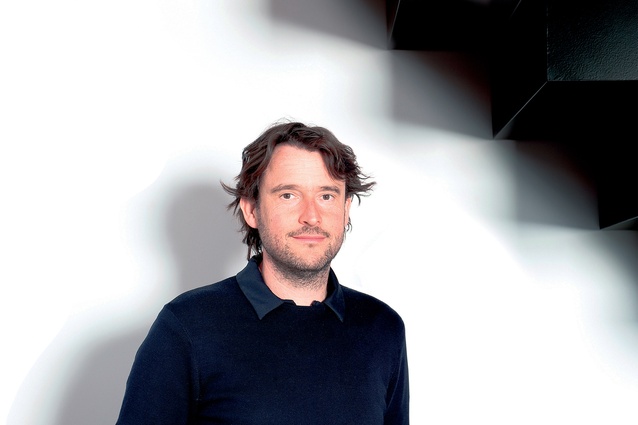The Waterdog
Klaarchitectuur has transformed this heritage-listed chapel into a new work and event space with a stacked-box composition that stands in sharp contrast to the original structure.
Adaptive reuse projects seek to achieve a balance between preserving the original building for its architectural and cultural heritage and creating a functional living or working space to contribute to the vitality and viability of a place. At Kapel De Waterhond (The Waterdog Chapel) in Sint-Truiden, Belgium, Klaarchitectuur has transformed a 16th-century building into a work and event space by creating a sculptural composition in sharp contrast to the original structure.
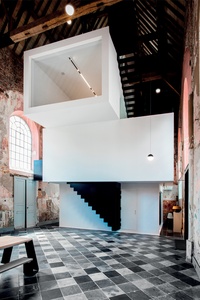
The response was driven by the desire to preserve and showcase the historical building and to reopen the space to the public. Klaarchitectuur founder, architect Gregory Nijs, was drawn to the character and high ceilings of the heritage-listed building, its structure and decorative vestiges providing evidence of its former uses.
“The original oak-wood roof construction and archway with cornerstones are typical stylistic features of a barn. The vaulted ceiling above the choir, decorative columns, arched windows and frescos are remains of when the space was used as a chapel,” says Nijs. The building has also served as an arts academy, peace court and rehearsal studio before sitting unoccupied for 50 years until Nijs purchased it in 2013.
Nijs designed a crisp, clean stacked-box structure that is inserted within the exterior walls, between the wooden trusses, and integrated into the roof structure of the building. Each box has a steel floor plate layered with OSB and parquet and a steel structure insulated with rock wool and lined with plasterboard. Forty-feet-deep titanium micropoles strengthen the foundations for bearing the load.
The boxes have glass-faced ends for receiving natural light and a greater sense of openness, and are stacked with perpendicular orientations that allow for each to have a ‘terrace’ on the top of the box below. Black, powder-coated steel stairs wrap externally around the boxes – the first staircase hovering above the ground as if suspended from the box above – and a concealed elevator provides alternative access.
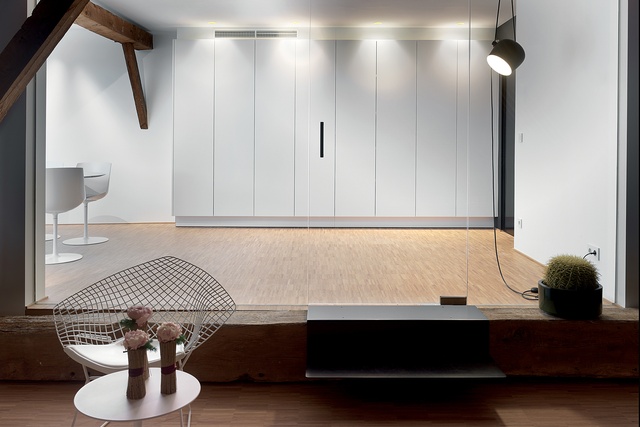
The directions of the boxes and stairs mean the space can be experienced from different viewpoints: seen up close and from afar. Nijs chose the white-and-black palette to contrast with the original building and to accentuate the patinated walls, timber roof structure and grey-tiled floor. The boxes house the workspaces and amenities and have been stacked at one end of the chapel to allow for an open multifunctional space for exhibitions, events, photo shoots, concerts, parties, dinners, readings, and other public and private functions.
The IT room and bathroom facilities are in the ground-floor box while workstations are on the first and second levels. Meeting spaces are in a third-level box, which is set back so that it is not visible from the ground floor, but projects laterally through the roof of the building to offer views of the courtyard and bring natural light inside.
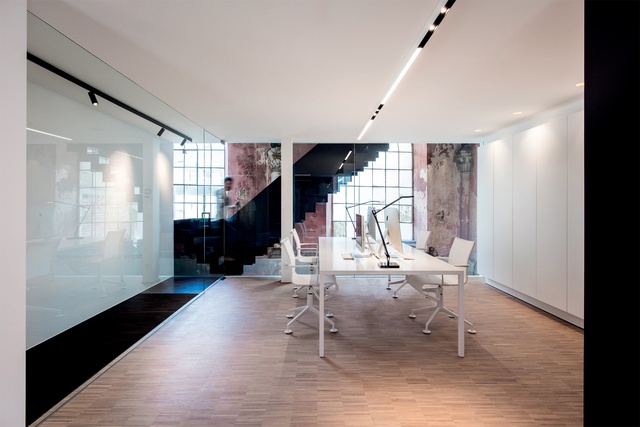
These top-level spaces incorporate components of the original roof construction, strengthened with lacquered-steel elements: the timber framework of the pitched roof encloses an informal meeting room; a beam and haunches pierce the box housing the formal meeting space; and a beam with bent plate provides a step between the two.
“Only when reaching this top floor does it become clear how the deliberate positioning of the boxes takes the rooftop construction into account,” says Nijs. “The design had been sketched out to the tiniest detail and nothing was left to chance as the steel and original construction elements had to fit within a millimetre of each other.”
Lighting is integrated into the ceilings and walls of the boxes, and pendant lights are suspended throughout the open space. Heating, cooling and ventilation are built into the bookcase of each box, and there is heating under the tiled floor throughout the chapel. The bathrooms are stark white with rectilinear elements and fixtures to complement the boxes. The benchtop and sink run the length of each space, pierced by a brass tap and with shelving and mirrors above.
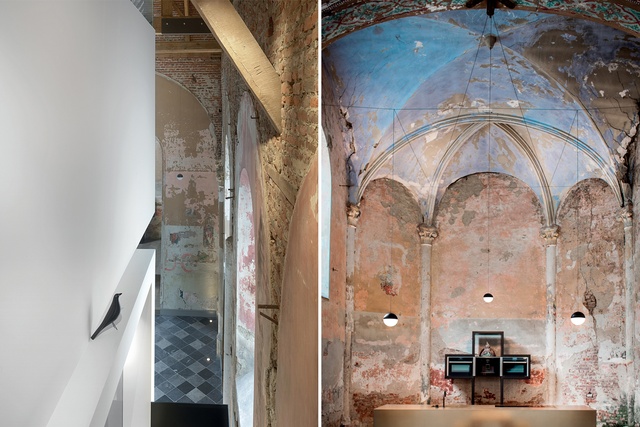
A shower is provided for impromptu overnight stays. The kitchen is located in what was the choir of the chapel – a 19th-century addition to the building – and elements are designed as a playful wink to this former purpose. A freestanding unit evoking a copper altar is made with MDF coated in sprayed brass and appliances are housed in a cross-shaped tabernacle.
Preserved and adapted historical buildings tell an evolving architectural and cultural story. This stacked composition inserted within the fabric of this heritage building looks like an independent sculpture but as the two structures gain height, the old and new merge to become part of each other’s story.


